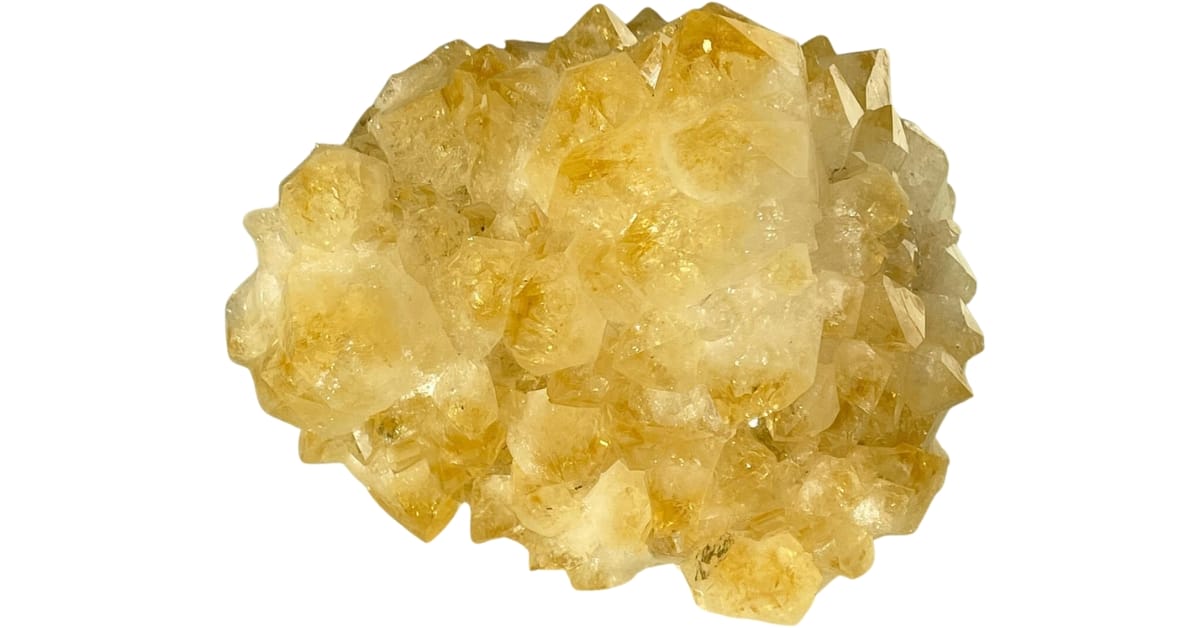Citrine is a dazzling gemstone that brightens up any collection. It’s a type of quartz, and it’s like the sunshine of the gem world because of its colors. Imagine a piece of the sun right in your hand— that’s what citrine looks like!
And just like the colors of the sun differ every time of the day, there are also several types of citrine depending on its colors and origin. It can be light and bright and it can be fierce and fiery, too.
In this article, we’ll go through the different citrine types and get to know their distinct properties and worth. As you read on, you’ll have a renewed appreciation for this amazing natural wonder. Let’s begin!
The 10 Different Types Of Citrine And What They Look Like
As we said, citrine comes in a range of sunny colors and from different origins. Because of this, there are different types of this gemstone, each with its own characteristics. The value of citrine also differs based on its type.
Below are the main citrine types and what makes them distinct from each other:
Natural Citrine
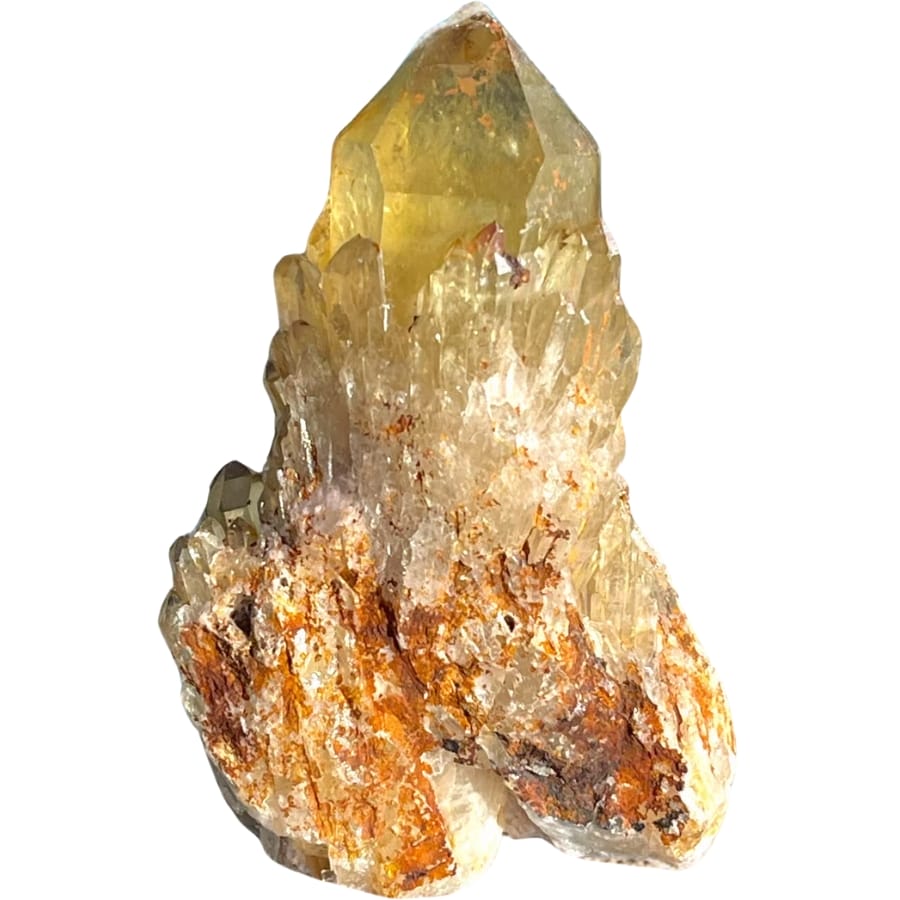
Natural citrine forms when quartz crystals undergo a natural heating process, incorporating iron elements that gift it with its distinctive colors.
Despite its name, which comes from the French word for lemon (“citron”), its color spectrum can extend well beyond the citrus fruit’s bright yellow. It’s also rarer than heat-treated citrine.
Its shades are often more subtle and nuanced compared to the vibrant oranges and yellows seen in treated stones, lending an air of sophistication and natural beauty.
Natural citrine’s rarity and distinct appearance make it highly prized among collectors and jewelry lovers.
Where you can find natural citrine
If you’re wondering where to find citrine, especially the natural one, you have lots of choices. Brazil is a big-time player and then there’s Madagascar, too. Africa’s got its stash as well, with Zambia and Tanzania joining the citrine club.
But it’s not just far-off places; the USA holds its own treasures. Over in Colorado and North Carolina, you can find citrine that sparkles with the best of them.
Heat-Treated Citrine
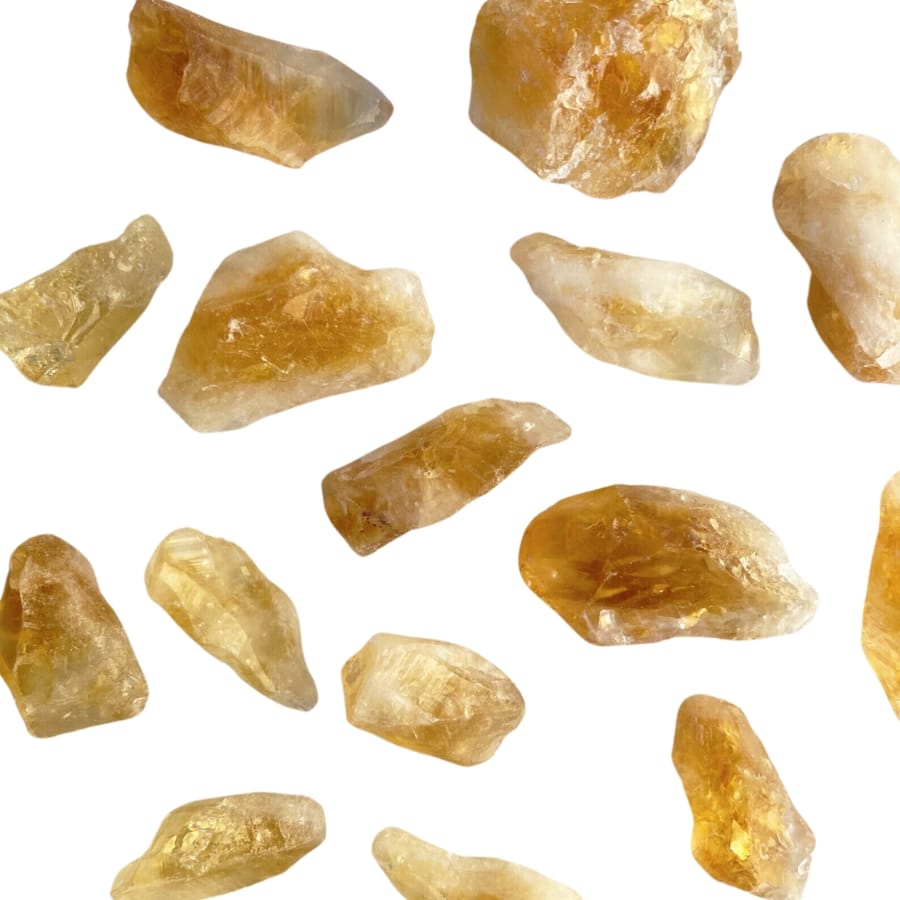
Heat-treated citrine is created by heating amethyst or smoky quartz until it changes color. This process brings out stunning shades of yellow and orange, transforming the original stone into something new and eye-catching.
Its colors can range from a soft, lemony yellow to a deep, rich amber, offering a wide variety for any taste.
Heat treatment is a common practice that makesh this gem more accessible and affordable. It takes a skilled hand to get the color just right. The temperature and duration of heating have to be carefully controlled.
Despite its human-assisted creation, it shares many qualities with natural citrine, including its durability and color range.
Where you can find heat-treated citrine
Heat-treated citrine is made in workshops and labs where experts can carefully heat amethyst or smoky quartz.
These stones are heated at super high temperatures until their color changes from purple or grey to the sunny yellows and oranges we know as citrine.
Yellow Citrine
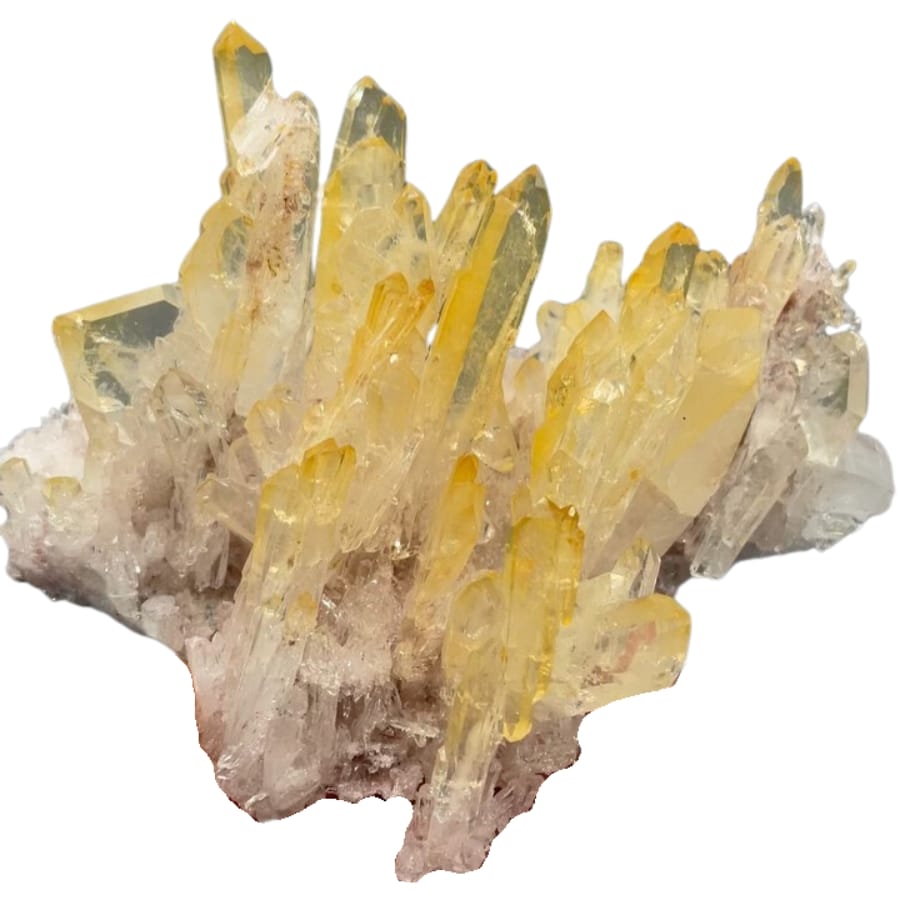
Yellow citrine stands out because of its bright and pure yellow tones, unlike other citrines that might have orange or brown hues.
It’s formed when quartz is exposed to heat, either from natural geological processes or artificially, which changes its color to the stunning yellow we see. Its consistent, sunny color offers a slice of brightness and warmth.
It’s a sought-after gemstone for jewelry, adding a touch of cheerfulness to any piece it adorns. It’s also more affordable than many other gemstones.
In Scotland, yellow citrine was a favored decoration in the hilts of swords and daggers during the 17th century. This not only added beauty to their weapons but was also believed to bring good luck.
Where you can find yellow citrine
If you want to find yellow citrine, Brazil is a major hotspot, offering some of the most beautiful pieces in the world. Madagascar is another gem, where it shines brightly among the island’s treasures.
In the USA, you’ll find this sunny stone in Colorado and North Carolina.
Lemon Citrine
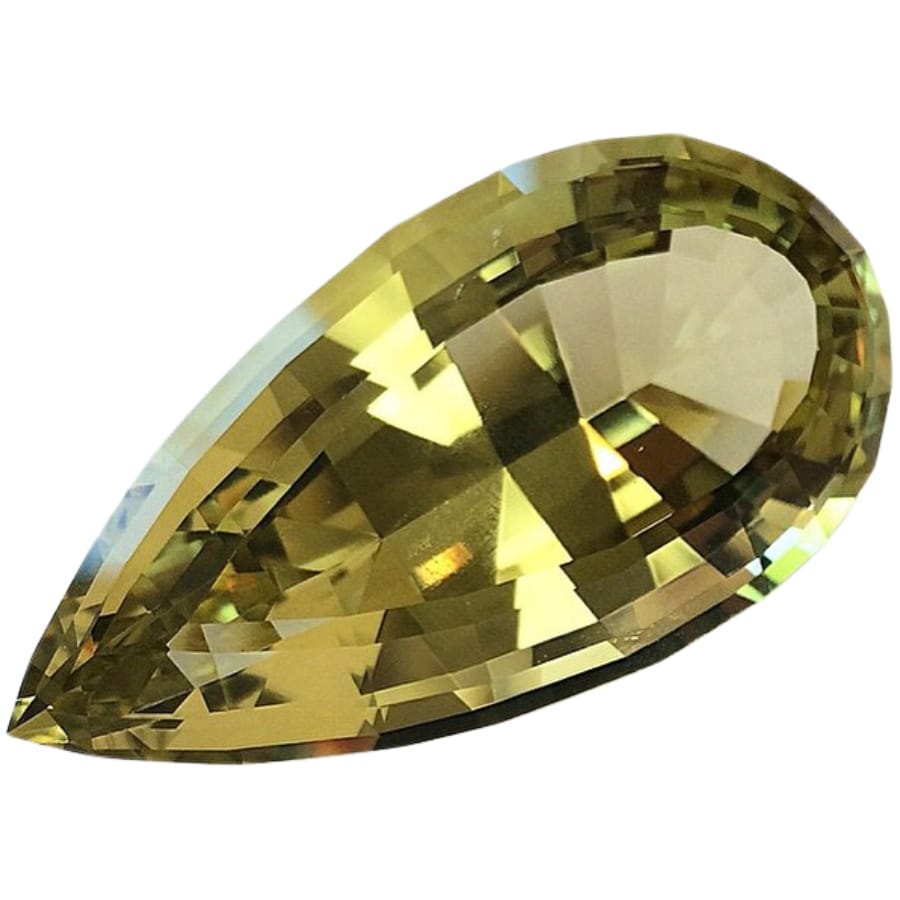
Lemon citrine stands out because of its bright, lemony yellow color. This vibrant hue sets it apart from other types of citrine.
Its clarity and the way it catches the light make it look like a drop of morning dew under the sun.
It’s formed deep underground when quartz is exposed to heat and pressure, and sometimes, natural radiation over millions of years. Its unique lemon shade comes from iron impurities within the quartz.
It’s not just its appearance that catches the eye, though. It’s also loved for its durability and versatility in jewelry making. In ancient times, it was even believed to protect against snake venom and evil thoughts.
Where you can find lemon citrine
You can find lemon citrine in Brazil. Madagascar’s soil also hides this yellow wonder. In Africa, Zambia’s lands are rich with them as well.
Orange Citrine
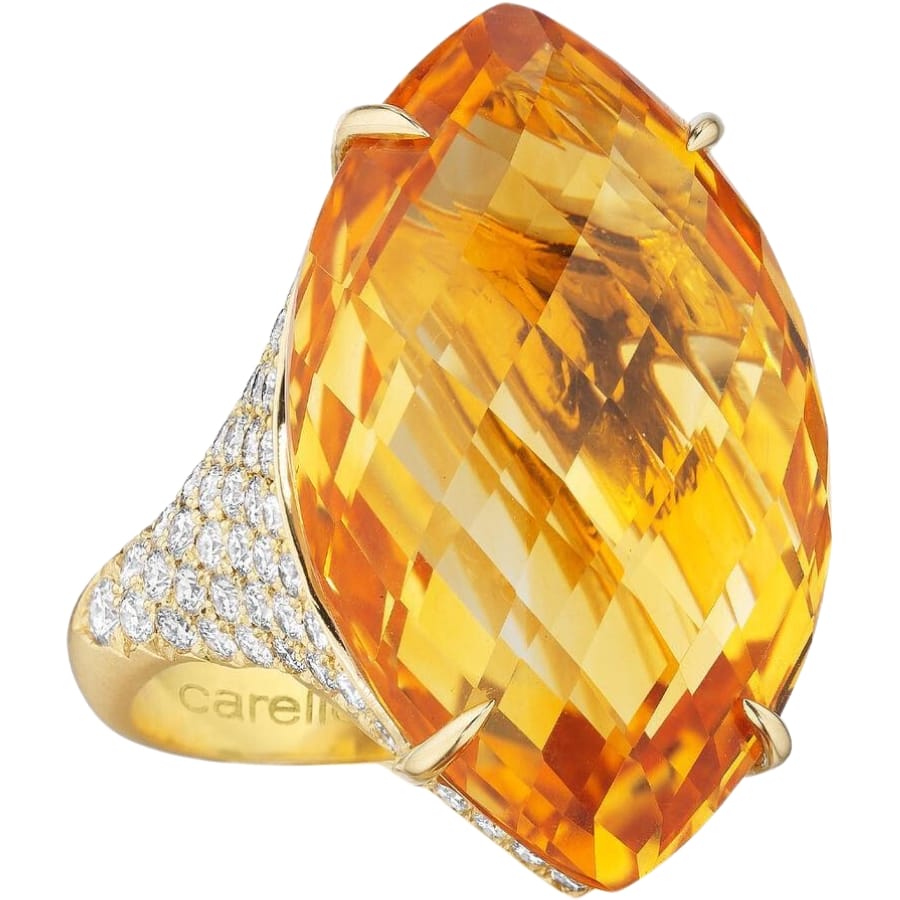
Orange citrine is like the glow of a warm fire captured in crystal. It stands out with its deep, rich orange shades, ranging from a soft sunset to the bold color of autumn leaves.
This type of citrine gets its eye-catching color from iron impurities and it shines a bit differently than its yellow or lemon cousins. Its depth of color carries a warmth that seems to light up from within.
Orange citrine is valued for its beauty and the cozy warmth it brings to jewelry and decor. It’s a favorite for those looking to add a touch of elegance and a pop of color.
It was once used by Roman soldiers on their breastplates during battle. They believed it would protect them and give them courage.
Where you can find orange citrine
Brazil stands out as a treasure trove for this gem, where vast mines yield stones that dazzle with their deep orange shades. Over in Africa, Madagascar and Zambia are also key players, offering citrine that captures the essence of a fiery sunset.
Golden Citrine
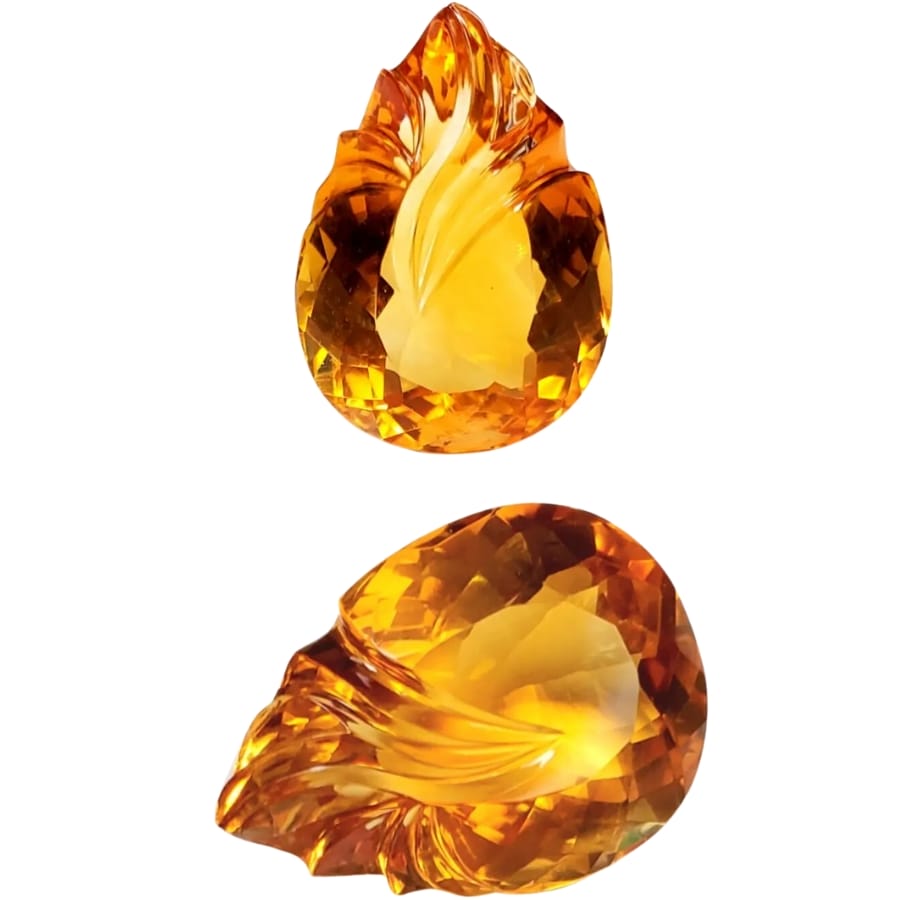
Golden citrine shines with a deep, rich golden yellow that’s as warm as a summer afternoon. Its intense, saturated color sets it apart from other citrine types.
While lemon citrine sparkles with a bright yellow and orange citrine glows with a fiery hue, golden citrine boasts a deep, luxurious gold, which gives it a regal feel.
It’s a popular choice for jewelry because it pairs beautifully with both gold and silver settings. Plus, its durability makes it perfect for everyday wear.
Golden citrine’s nickname is, “the merchant’s stone.” Historically, merchants would keep it in their cash registers as a symbol of wealth and prosperity, hoping it would bring them good fortune in their business ventures.
Where you can find golden citrine
Golden citrine finds its home in a few special places around the world. Brazil is one of these, thanks to the abundant quartz mines there. Madagascar is another place where golden citrine lights up the land. Then there’s Zambia as well.
Ametrine
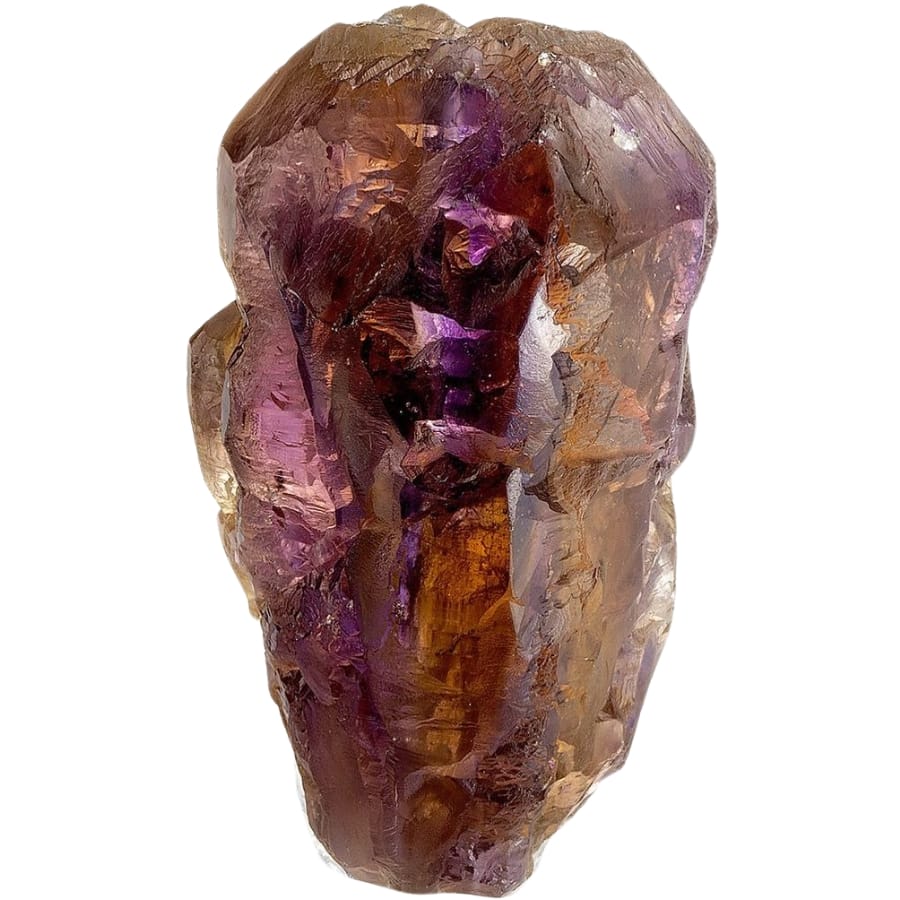
Ametrine looks like a magical blend of sunrise and sunset. It’s a combination of two gems: amethyst and citrine, which means it has both purple and yellow colors in the same stone.
It forms when amethyst and citrine grow together, which happens when part of the quartz is exposed to heat naturally, turning yellow, while the rest stays purple.
Its beauty and rarity as a gem with dual colors make it a favorite for jewelry. The skills it takes to cut it in a way that showcases both hues perfectly is also no joke.
Ametrine is believed to have been first discovered in Bolivia in the 17th century. Legend has it that a Spanish conquistador received a mine that produced this gem as a dowry when he married a native princess.
Where you can find ametrine
Ametrine is a rare gem that mainly comes from just a few spots. The most famous place for finding it is Bolivia, specifically in the Anahí Mine.
Besides Bolivia, there aren’t many other places known for ametrine. This rarity makes the stones even more special.
Madeira Citrine
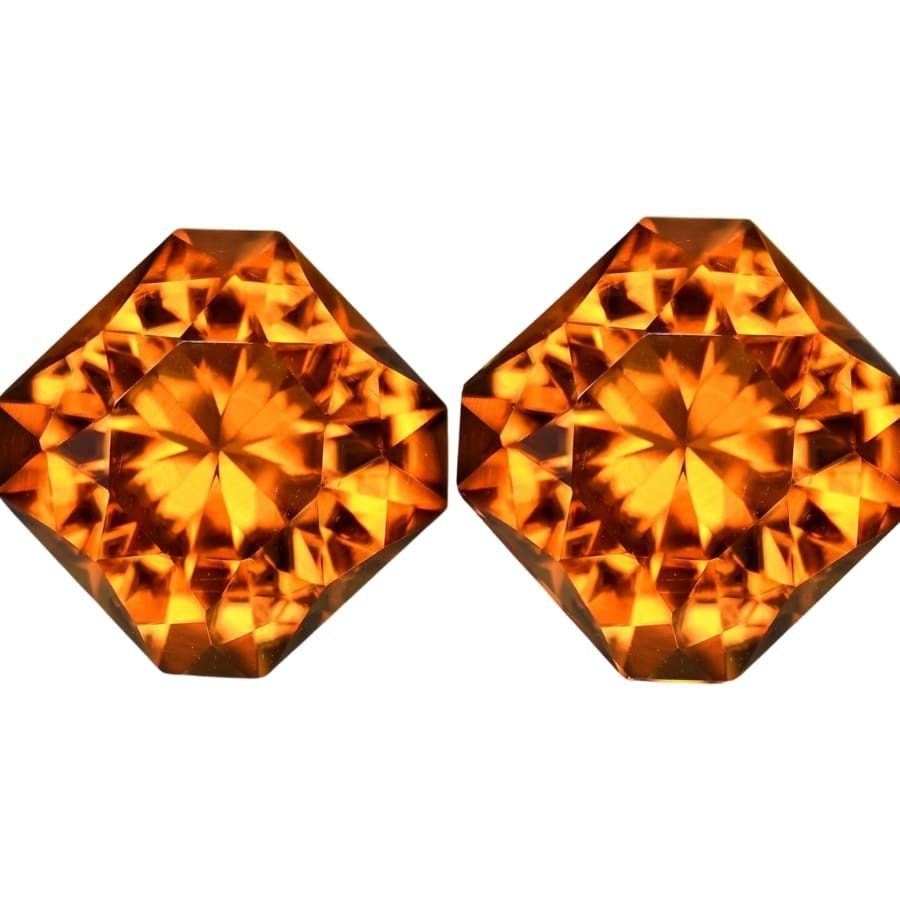
Madeira citrine looks like it captured the last rays of a sunset. It has a deep, rich orange or reddish-brown color that’s much darker than other citrine types.
Its name comes from the madeira wine, known for its similar deep amber color. This type of citrine stands out because of its warmth and depth of color.
While other citrines might remind you of lemonade or sunshine, madeira citrine is all about warmth and richness. This depth of color makes it unique and highly sought after for jewelry, especially when people are looking for something that stands out.
Despite its name suggesting a Portuguese origin, the gemstone isn’t actually from Madeira. Its name was simply inspired by the color similarity to the famous wine.
Where you can find madeira citrine
Madeira citrine is not tied to one specific spot like some stones. Brazil is one of its key sources. Another place where you might find it is Zambia, a country that’s also celebrated for its wealth of precious gems.
Palmeira Citrine
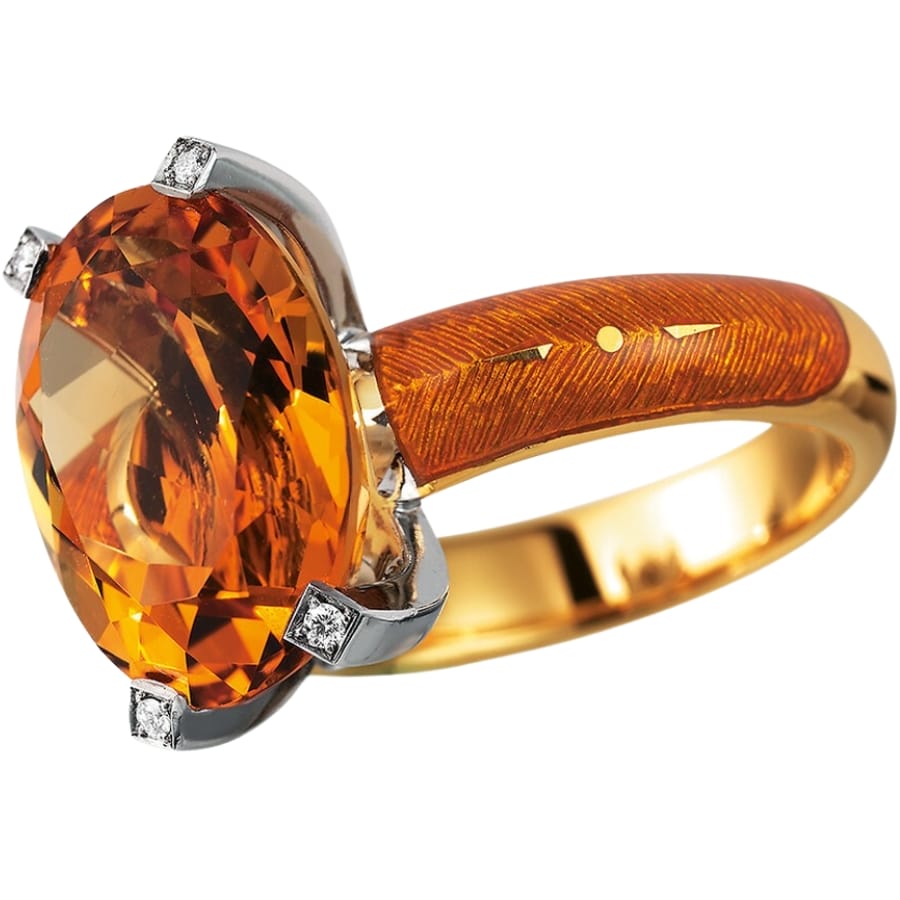
Palmeira citrine is known for its vibrant shades of orange. Its intense and fiery color ranges from a bright, sunny orange to a deeper, almost burnt orange hue. This range of color gives it a warmth and radiance that’s truly special.
Its deep and consistent coloration makes it distinct from other citrine types. It boasts a richer, more orange color, which makes it highly sought after for jewelry.
Its vibrant color can brighten up any look and its rarity adds to its appeal, making it a prized possession for collectors and gem enthusiasts.
Palmeira citrine gets its name from the Brazilian municipality of Palmeira, where some of the finest specimens have been found. This connection to its place of origin adds a layer of intrigue and history to the stone.
Where you can find Palmeira citrine
Palmeira citrine mostly comes from Brazil. The unique geological conditions in this area allow quartz crystals to absorb iron, which gives Palmeira citrine its distinctive orange color.
Rio Grande Citrine
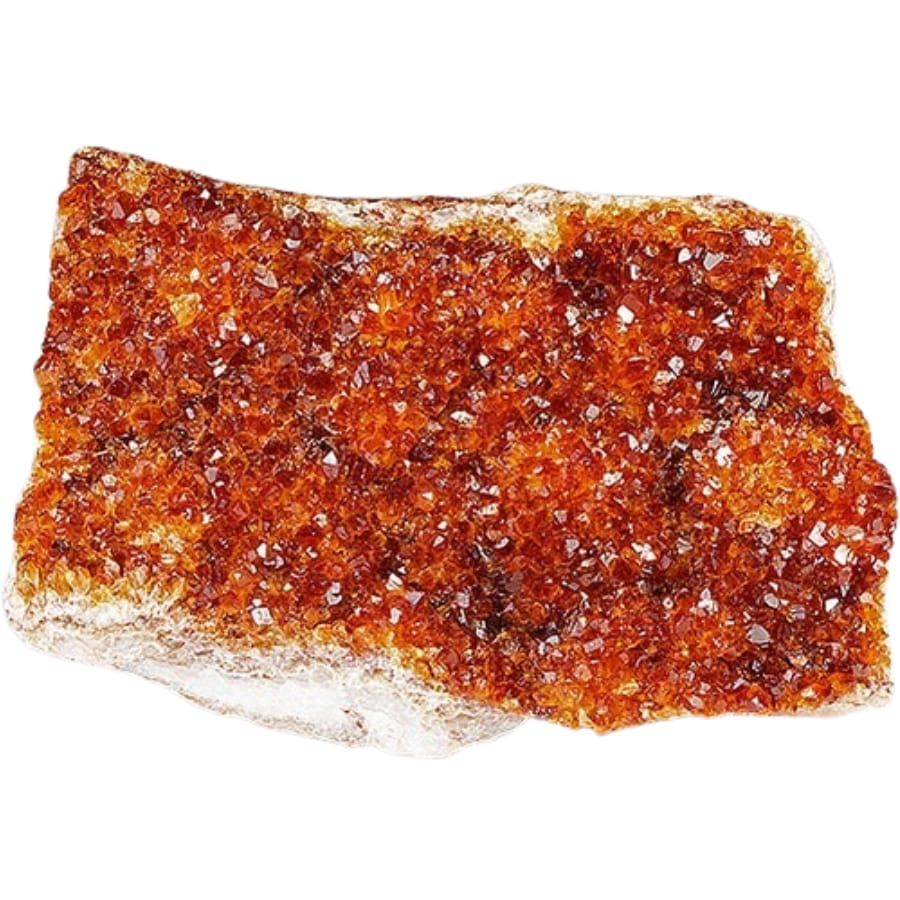
Rio Grande citrine captures the essence of golden sunlight. It’s named after the Rio Grande do Sul region in Brazil, known for its rich deposits of this beautiful stone.
It has a deep, golden-yellow hue, almost like honey. This shade is more intense and has a truly captivating warmth.
Its clarity and depth of color are on another level as well. While other citrines might lean towards lighter yellows or even orange tones, Rio Grande citrine boasts a rich, golden color that makes it highly sought after.
It’s the kind of gem that adds a touch of elegance to any piece of jewelry, lighting up the room with its brilliance. Jewelry made with it is considered luxurious.
Where you can find Rio Grande citrine
The Rio Grande do Sul region in Brazil is famous for its rich deposits of Rio Grande citrine. The unique conditions in this region allow for the formation of this gem.

